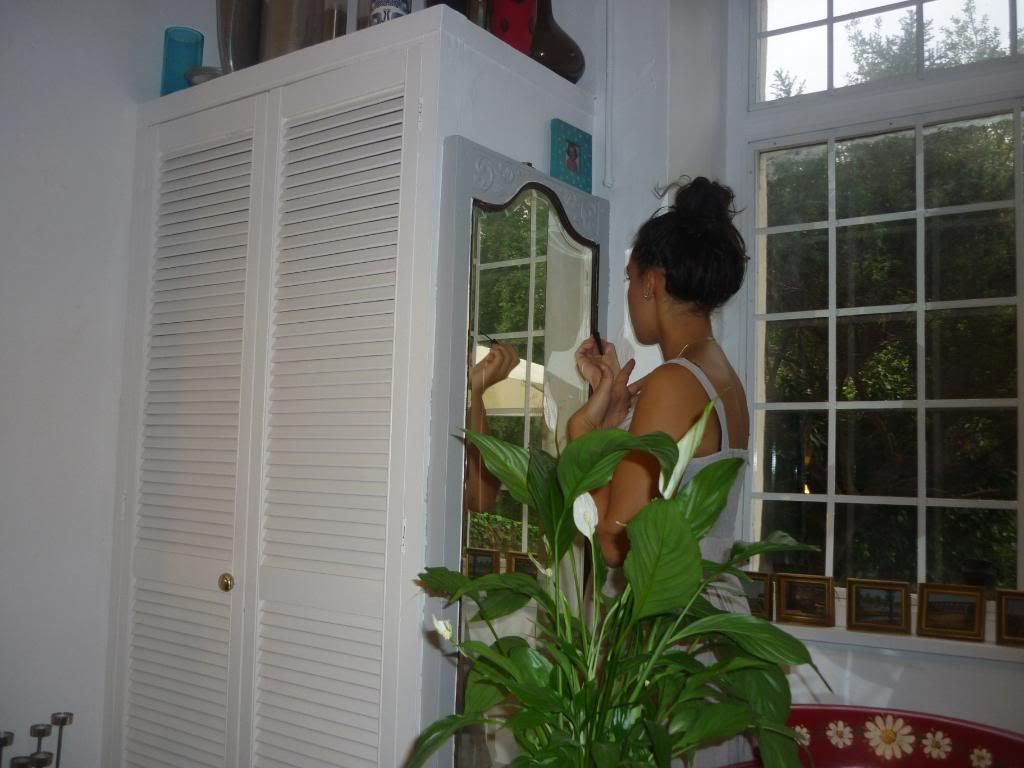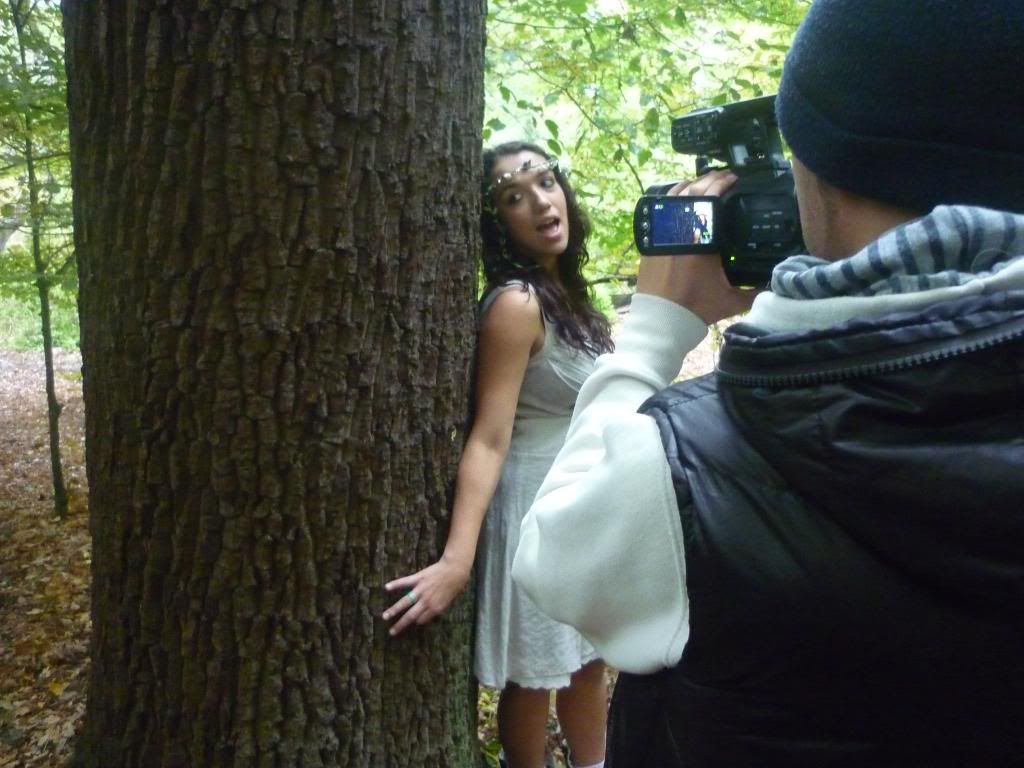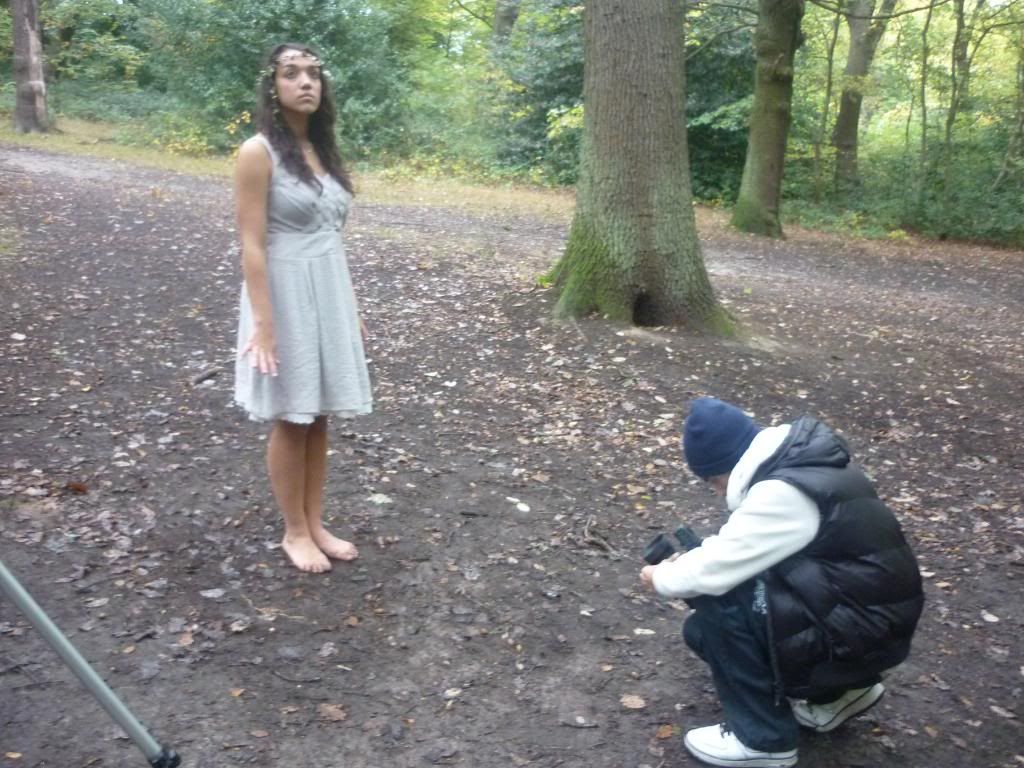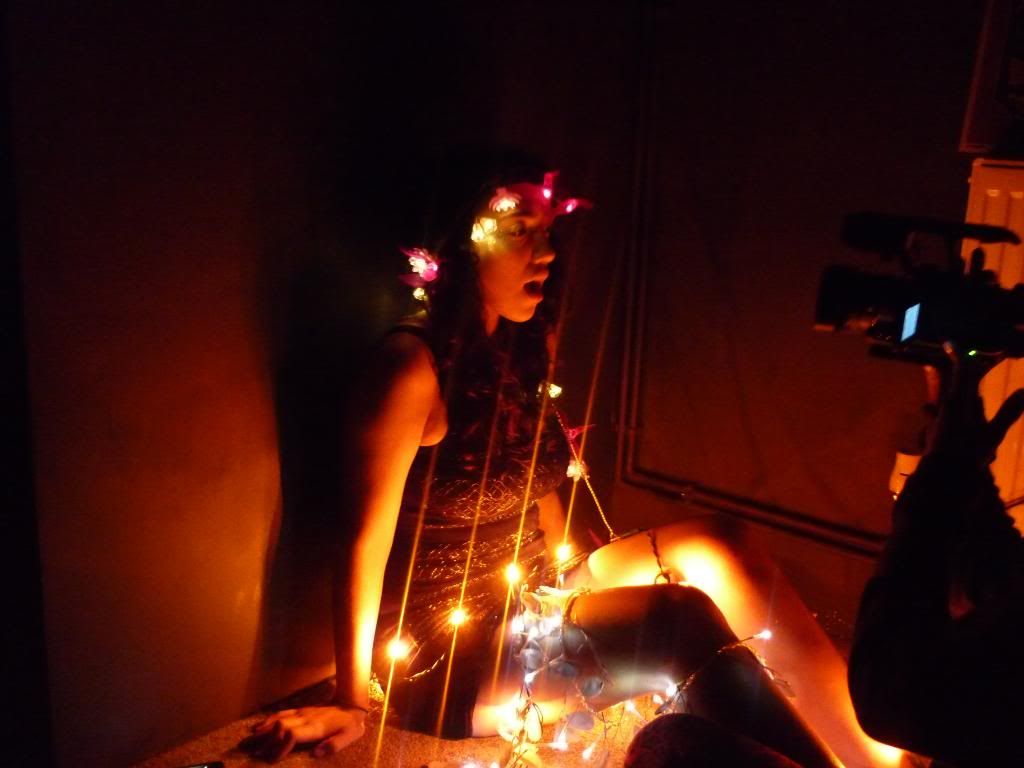 |
| The layout of Final Cut Pro. Its more technical compared to other basic programs. |
Last year at the end of our AS course, we were shown how music videos are filmed so they can be edited in a way which would sync up the lips with the lyrics. We were shown a demo of how lip syncing is done and what it requires. This tutorial showed us the basics of how edit a music video.
During the planning of our music video, we were told that we needed at least 4 base tracks to ensure we had enough footage to make the video. However, as we had recorded well over 20 base tracks, we had multiple shots which needed all to be prepared before editing could begin. We had to mark specific sections of every single base track so we can sync all the them together along with the music to allow us to easily edit. This was a new skill which us as a group had developed as marking the same sections of over 20 base tracks we had required a significant amount of time. It also required a great deal of precision to ensure that the lips and music were timed good enough to make it look like our artist Poppy was actually singing. The precision involved was the most time consuming bit of the editing as an error in timing can complicate the whole editing process.
The approximately 23 base tracks we had filmed all had to be placed onto separate columns on the timeline. When each base track was placed onto its separate column, they all had to be dragged individually to match the markers we placed on the music so the lips sync the artist. All that was required of us now was to delete the clips that we didn't want allowing the other clip in the column below to appear on screen. Before the tutorial we had at the end of AS, I initially thought that all the clips were recorded and placed onto one column on the timeline. Even during the tutorial sessions, I tried to lip sync a music video using my own technique and soon discovered why the technique we had been taught in class is better and much more easier. I feel that I have learned and adapted to a new editing technique used for editing a music video together. As you can see in the image below, the number of base tracked we had below had all been marked up to be in sync with the music. Having cut every base track where there are markers, we then began deleting the clips in which we didn't want in the music video.
 |
| Marking each base track required a level of patience and precision. Once each one had been marked up, we just had to align each every base track to the markers of the music. |
Another skill I had learned during the editing of our music video was the colour alterations we can make to each individual clip. This would allow us to change the colour of a clip if we felt the original shot was not to the standards we had wanted. We had used colour correction in our music video as we thought some shots seemed to be too dark and too vividly coloured. The colour correction pane allows the editor to change every aspect of the shot in terms of colour. It allows you to alter the hue, saturation, contrast, blacks, midtones and whites to get the desired colour we wanted. As we were aiming to create a professional looking music video, we didn't want to tamper with the colours too much as the finished product may like amateur and silly. This is why we had only used it to brighten up a few dimmed shots and tone down bright colours which we thought were too vivid.
 |
| This is the colour correction pane which allowed us to change certain aspects of a clip's colour and appearance. |
 |
| Before colour correction. Poppy is hard to see on screen as the lighting is not bright enough to see her clearly. |
 |
| After colour correction. As you can see, Poppy is much more visible on screen and clearer to see. |
 |
| We experimented with a few effects but they seemed unrelated to what we were doing. |
 |
| Message placed in our music video using another program, Livetype. |
All in all, I feel I have learnt much more skills in editing than compared to last year. This is because as time has gone by, I have become much more comfortable with the layout Final Cut Pro, the vast features it has to offer and generally how it works. If I want to cut a clip, I can easily do so as I have become more suited to the program. If I want to add in an effect, I know how to navigate around to find what I'm looking for and implement it into our music video. One year ago, if I had been told to edit a music video and sync up all the words using various shots, I would not know where to begin. Now, I feel I have learnt the skills and knowledge to create a music video of good quality without struggle.

















































